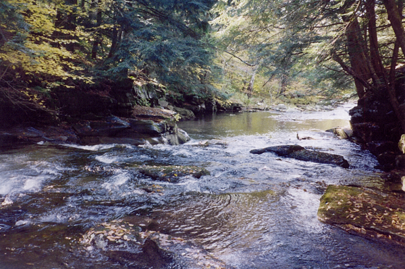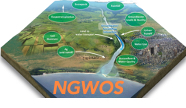About ExaSheds
The Problem
As the world population grows, so do concerns that water availability and water quality will continue to diminish. Changes in land use, climate change, and extreme weather exacerbate these concerns, which threaten not only our freshwater supply, but also systems that rely on watershed exports such as hydropower and agriculture.
- Watersheds funnel rain and snowmelt to river basins where they are used by municipalities, agriculture, and energy producers.
- We rely on river systems and watersheds to filter and transform biogeochemically excess nutrients or other toxic elements
- But watershed and river basin function may be impacted by:
- Population growth and land use change
- Increase in contaminant and nutrient inputs
- Changing precipitation and temperature

The Opportunity
With leadership class computers, big data, and machine learning combined in learning-assisted physics-based simulation tools, we have an opportunity to fundamentally change how watershed function is understood and predicted.

What We Will Do
Explore strategies for learning-assisted physics-based simulations, including:
- Develop model inputs from sparse, coarse, and indirectly related information
- Hybridize process-resolving simulations and machine learning (ML)
- Enable multiscale approaches
- Facilitate inverse modeling and UQ

Where We Will Do It


Collaborations
 Key collaboration with the Next Generation Water Observing System (NGWOS) led by the USGS on data and conceptual models for both the DRB and UCWRR.
Key collaboration with the Next Generation Water Observing System (NGWOS) led by the USGS on data and conceptual models for both the DRB and UCWRR.
 Close partnership with the Berkeley Lab Watershed Function SFA in the East River, Colorado Watershed as a source of data and as a user of software products.
Close partnership with the Berkeley Lab Watershed Function SFA in the East River, Colorado Watershed as a source of data and as a user of software products.- Close collaboration with ESS-Dive


- Collaboration with the SAIL project centered on the Gunnison River Basin for validation of precipitation downscaling.

- Leveraging and collaboration with IDEAS-Watershed project for development and use of interoperable watershed software.

- Participation in Interagency effort for Integrated Hydro-Terrestrial Modeling (IHTM) and Cyber-Infrastructure Working Group.
- CD-MII project at PNNL.

